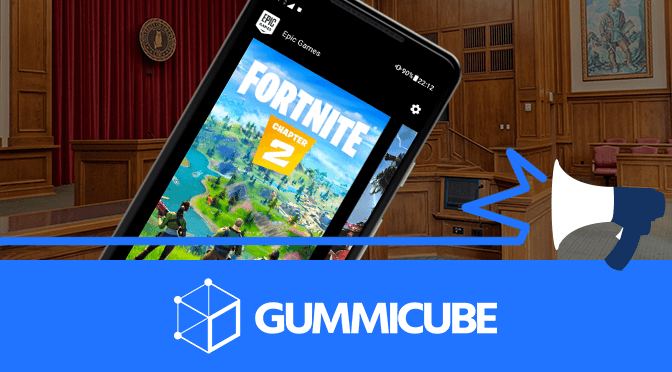Apple Arcade vs Google Play Pass
September 28th, 2019


by Anh Nguyen
COO & Co-Founder at Gummicube, Inc
Shortly after Apple released Apple Arcade with iOS 13, Google Play launched the Google Play Pass. Now both stores have a subscription service for apps, both of which have been inviting select developers to contribute games. The new subscription options can influence the App Store Optimization strategies for games and apps on both stores.
Apple Arcade
Apple Arcade is a subscription service that provides users with unlimited, free access to a number of mobile games on the App Store. For $4.99 a month, users can access a wide library of games across their Apple devices in a range of genres, from casual games to indie games to classics revamped for the iPhone.
Every game on Apple Arcade is an exclusive, made by developers selected by Apple and available only on Arcade. This means that games available on iOS and Google Play cannot be sold on the Arcade, and new developers can’t upload an app to Apple Arcade.
The App Store includes a separate tab for the Apple Arcade, so users can find specific games in a distinct section. However, Arcade games will show up in App Store searches alongside other apps and mobile games. As such, they’ll still need to optimize for the App Store and compete with other apps.
Google Play Pass
On the Google Play Store, the Play Pass provides users with premium access to over 350 subscription apps and games. While Apple Arcade focuses on exclusive mobile games, Play Pass is somewhat more expansive, including popular mobile games and existing non-game apps like Facetune.
Google Play Pass lacks Apple Arcade’s mobile exclusivity, so developers with apps available on both stores could still be included in Play Pass. Additionally, while Apple Arcade games are only available in the Arcade, games and apps available on Google Play Pass can still be purchased or used separately for non-subscribers.
Like Apple Arcade, Google Play Pass is curated. Developers must be invited to be included in Play Pass, so they cannot simply upload an app and click a box to join. Similarly, neither Arcade nor Play Pass apps have microtransactions or in-app purchases; users will not pay anything outside of the monthly subscription for the apps.
Apps available with the Google Play Pass are also available normally within the Google Play Store; there is no separate section in the store for them. Developers will need to optimize their apps for discoverability and conversions. However, Play Pass apps can include information about their availability through Play Pass to test if it improves conversions from users already subscribed to the service.
Optimizing for the Service
Whether an app is available on Apple Arcade, Google Play Pass, or independently on the stores, optimizing is important. Developers should keep some notes in mind when optimizing.
Apple Arcade apps will need to compete with other Arcade games as well as apps available elsewhere on the App Store. While users subscribed to Apple Arcade may feel more inclined to download an Arcade game, there’s still a good variety of available games. It’s still important to optimize videos, screenshots, descriptions and keywords to maximize discoverability and conversions within the store. Videos are a big factor on Apple Arcade, as every Arcade app features a video as the first part of its creative sets.
Google Play Pass apps can capitalize on their availability by highlighting it in their app pages, including creatives and descriptions. These apps can include a mention of how Play Pass subscribers get free access to all available content and use that as a selling point. Play Pass apps do not currently feature any distinct badges or indicators of their Play Pass availability, so it’s up to the developers to call it out.
Regardless of availability, all apps’ pages should still use optimized keywords, creatives and descriptions. Whether an app is available on the Arcade or through Play Pass, they’ll still need to improve their keyword rankings and visibility in order to be discovered and downloaded.
App developers should track how their rankings and conversions change as the services roll out and users begin to subscribe. The changing app ecosystem will likely shake up what users search for and are drawn to, so monitoring movement and adjusting ASO accordingly can make a big difference in an app’s success.
Want more information regarding App Store Optimization? Contact Gummicube and we’ll help get your strategy started.
Similar Articles

Posted on August 15th, 2020
Every time a user makes an in-app purchase or buys an app from the App Store or Play Store, Apple or Google takes a portion of the revenue. This App Store Tax has caused complaints for some developers, but with Apple and Google in the middle of antitrust hearings, tensions are continuing to grow.

Posted on August 8th, 2020
Apple has a strict set of App Store Guidelines that developers must follow in order to avoid being removed. Recently, it was announced that the guidelines will prevent developers from selling cloud gaming apps on the App Store. This could have an impact on app marketing, development and App Store Optimization.

Posted on July 7th, 2020
Apple Arcade, the App Store’s subscription game service, provides users with unlimited access to over 100 games for the price of $4.99 a month. Yet Apple can afford to be choosy, as it's cancelling several Arcade game contracts in the company’s effort to maintain subscribers.





